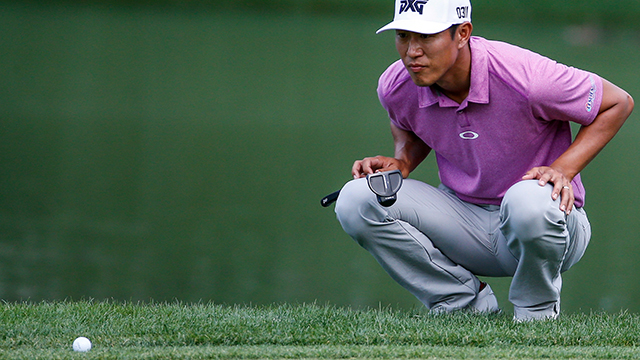NEWS
Golf tips: Don't look away from a missed putt

The objective of golf is deceptively simple: get the ball in the hole. But many amateurs fail to take advantage of what they might be able to learn from the shots that don't land in the bottom of the cup.
For example, take putting percentages. According to the PGA Tour's statistics, the average touring professional makes only about half of all putts from eight feet away. But the mid-handicapper's odds from that distance are just 1 in 4. And from farther away, the gap between the two becomes even greater.
Of course, then there's Wells Fargo Championship winner James Hahn, who buried this sweeping 51-footer for eagle en route to his playoff victory.
But knowing that the odds are against sinking a long putt, doesn't it make sense to learn everything you can from your misses?
That's the thought of PGA Professional Kevin Weeks, Director of Instruction at Cog Hill Country Club in Lemont, Ill. Weeks said many amateurs look away after a long putt, and miss out on being able to get a better read on their next attempt.
[wide_search_instructor]
That's particularly important on sweeping downhill or sidehill putts, Weeks said, because what the ball does once it passes the hole should give you an idea of what it might do on the way back -- perhaps keeping you from those dreaded three-putts, or worse.
"The big thing is committing to it and then watching it," Weeks said. "So many people will hit a putt, and if it doesn't go in, they just look down or away. You need to watch to see how it rolls out.
"That's a free read. And it gives you a better idea of how much slope there is."
So you're facing a big breaker. What's next? Weeks said your eyes may deceive you. Course designers will create situations on greens to fool golfers into thinking there's more -- or less -- break in a putt than what's really there. Your eye sees one thing, but the ball does another.
MORE TIPS: Why Jason Day walks the line on his putts
Try to get more than one sense involved, Weeks said.
"The big thing is to walk the line and see if you can feel what it's going to do," Weeks said. "Visually, you may see some things that aren't actually there. Once you feel the break, where you think the ball will begin to change direction, that's where the ball needs to start.
"Make some practice swings to give yourself an idea of the speed, and then commit to the process. If you don't stay committed to that, your speed's going to be off."
Some golfers feel a little more comfortable standing over a putt that breaks hard left to right, others favor right to left. But arcing putts, particularly with elevation change, are more a matter of determining an aiming point, having a feel for the correct speed, and then staying committed to making the stroke, Weeks said.
"Left to right or right to left, it's hard for anybody," Weeks said. "They're both equally difficult. I think for anybody, those big ones are really hard."
Obviously, leaving yourself with a straight-in putt from below the hole is always preferable. But Weeks said on a sweeping putt, it's much more important to get the right speed rather than the correct line. Trying to lag one close is a recipe for disaster.
"If you go into that putt trying to leave yourself below the hole, the next thing you know, you'll have left yourself 12 feet below the hole," Weeks said. "I think the best thing to do is pick a line and speed that gives you the best chance to make the putt. And try to hit that putt -- and watch to see what happens."
With over 20 years teaching, 16 at Cog Hill, Kevin Weeks has established himself as a premier instructor on the local and national level. Kevin has earned three Illinois PGA Instructor of the Year Awards (2005, 2007, 2009), is currently ranked 3rd on Golf Digest's Top Instructors in Your State List (IL), and was a finalist for 2010 National PGA Teacher of the Year Award. In 2013, Kevin was named US Kids Golf Master Instructor for his commitment to developing junior players. Over 60 of his students have played college golf.